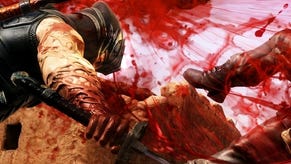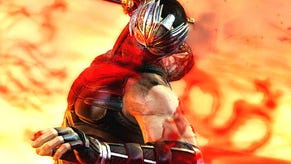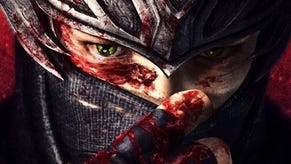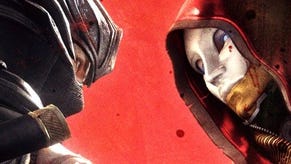Ninja Gaiden III
Hayabusted open.
Set piece follows set piece in Ninja Gaiden's latest, with a more steady stream of QTE interactions than seen in previous titles. At times, it almost spills into the kind of pantomime absurdity seen in From Software's 2009 Ninja Blade, convoluted button combinations used to send Hayabusa from the top of the Houses of Parliament into a gliding swan dive down onto his enemies in sequences that bend even the liberal physics of the ninja cinematic tradition.
At other times, the QTEs are tiresome and mundane, as you alternately squeeze the left and right triggers to climb a tall wall, stopping to takedown any enemy stupid enough to look over the edge down at you. Nevertheless, Team Ninja integrate micro-set pieces to the flow of battle with some elegance and, in the demo's final face off with a giant mechanical spider robot whose legs you must chop at in order to bring it to its knees, Ninja Gaiden III succeeds in matching its forebears for imparting a sense of unstoppable power in its player.
Less welcome are the invisible walls that punctuate every street in the demo. At times you're forced to walk around a car as trying to leap over its bonnet will see you pushed back by some unseen force of code. It's an anachronistic design characteristic and Tecmo Koei should be under no illusion that it makes Ninja Gaiden III feel out-dated from first touch. Every video game must have its borders. But wherever possible, they should match the visual extremities of a play space, and far too often Ninja Gaiden's invisible walls draw closer than its environment assets.
Visually the game is gorier than its predecessors. Fallen enemies crawl, mortally wounded along the concrete as you carry on the fight around them, while Hayabusa will run an unsuspecting foe through twice if you manage to sneak up behind him undetected.
The camera spins and pans, slowing time to take in particularly brutal executions, while blood fountains from wounds, splattering the pavement around. The developer does manage to splice together the ancient Japanese mythology of its theme with contemporary world seamlessly, as an eagle descends to Hayabusa's shoulder to save the game, just before a helicopter streaks overhead and turns its cannons toward you.
It's a reveal of mixed quality, then. Team Ninja has undoubtedly managed to keep the tone and feel of the series despite Itagaki's departure (no doubt aided by Ninja Gaiden Sigma director Yousuke Hayashi's steering). But the overreliance on QTEs at this stage in the development will split the audience. It may just be a result of the developer attempting to pack as many set pieces into the demo as possible, but following Simon Says button prompts will never be as fun as writing the interactive story oneself, and the balance currently seems off.
Likewise, while Ninja Gaiden has always been a series that carves a linear path for the player to follow, unless some of the more prominent invisible walls felt here are lifted, or arranged in more thoughtful ways, players may bang their heads against them once and not bother a second time.









.png?width=291&height=164&fit=crop&quality=80&format=jpg&auto=webp)



